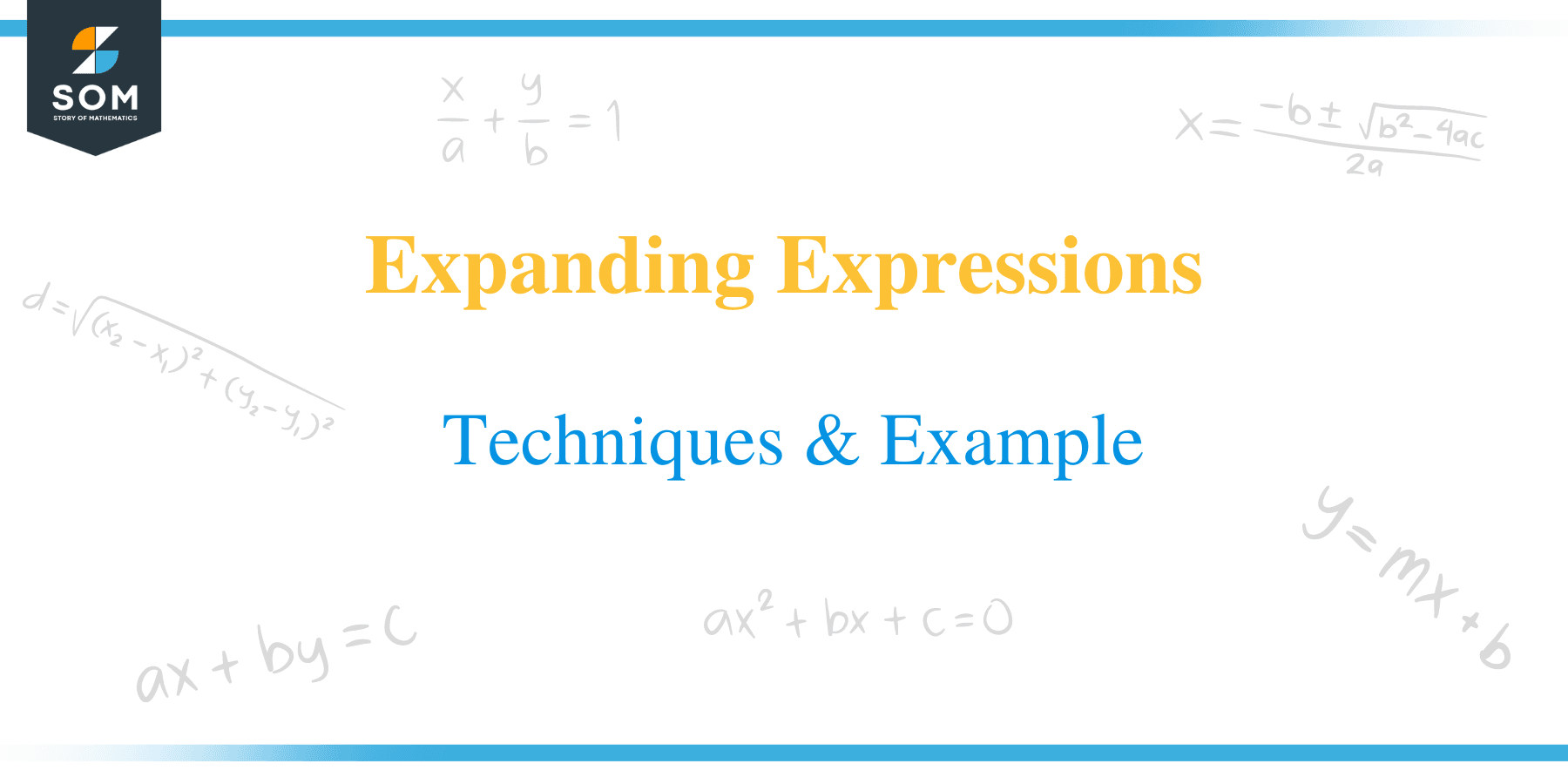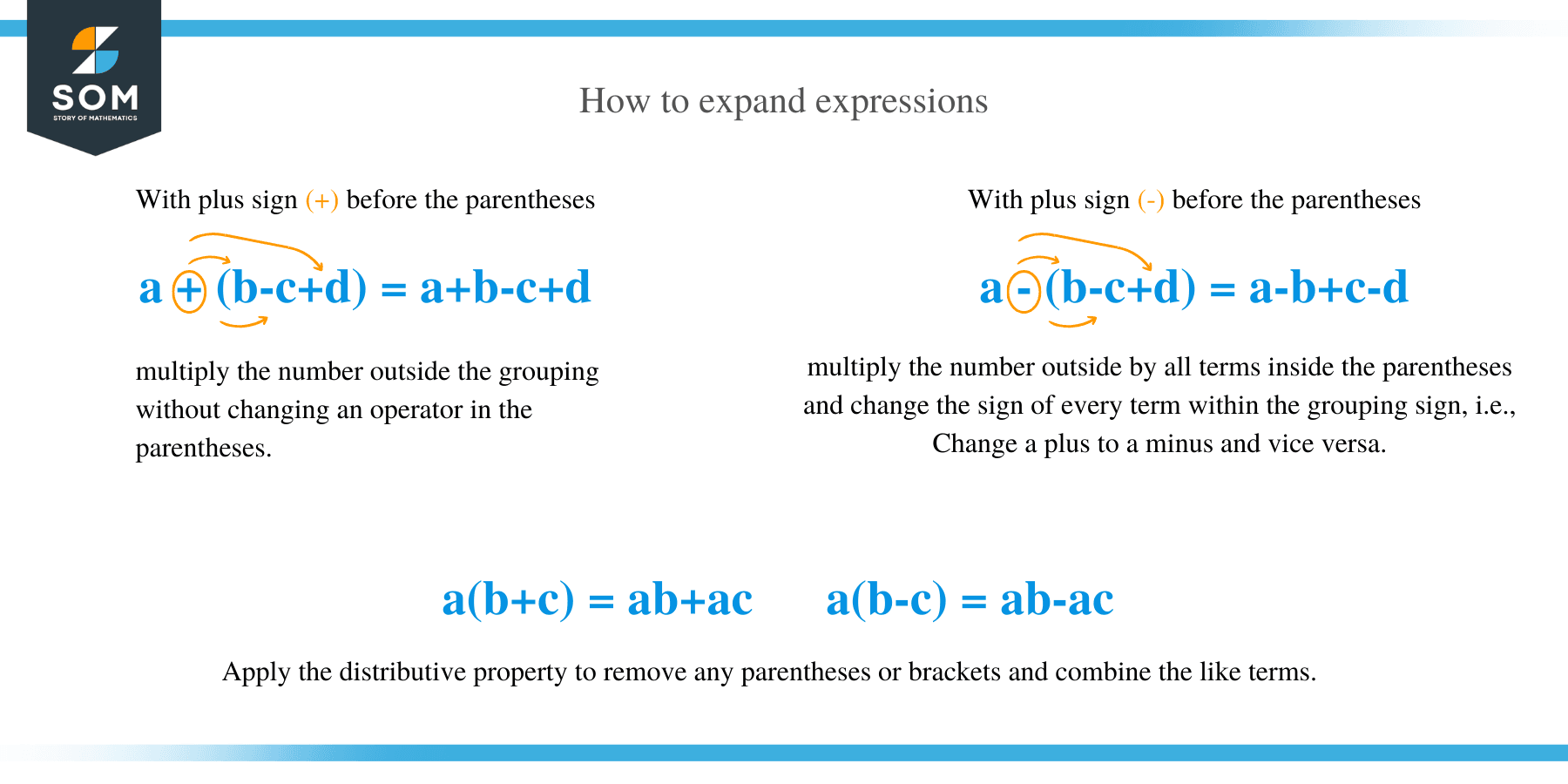- Home
- >
- Expanding Expressions – Techniques & Examples
JUMP TO TOPIC
Expanding Expressions – Techniques & Examples
 Okay, so you can’t wait to learn how to expand algebraic expression, but first, what is an algebraic expression? Why do we need to learn how to expand expressions?
Okay, so you can’t wait to learn how to expand algebraic expression, but first, what is an algebraic expression? Why do we need to learn how to expand expressions?
Algebra was in existence as early as 2000 B.C. when early civilizations such as Phoenicia and Mesopotamia could engage in barter trade to exchange goods. To exchange goods more efficiently, people started using letters to express goods; this led to the emergence of algebraic expressions.
To know the basic definitions of algebraic expressions, you can consult the first article of this section (Adding and Subtracting Expressions).
What does it Mean to Expand an Expression?
In this article, we are going to learn how to expand and simplify algebraic expressions.
Expanding means enlarging something. In this case, it means getting rid of any sign of grouping in an expression. Signs of grouping are brackets, parentheses, and braces or curly braces.
How to Expand Expressions?
To expand an expression, you only need to adhere to the following simple tricks:
- When a grouping is preceded by a plus (+) sign, multiply the number outside the grouping without changing an operator in the parentheses. For instance, to expand:
a + (b − c + d) = a + b − c + d.
- And if a grouping is preceded by a minus sign (-), multiply the number outside by all terms inside the parentheses and change the sign of every term within the grouping sign, i.e., Change a plus to a minus and vice versa. For instance, a− (b − c + d) = a − b + c − d.
- Apply the distributive property to remove any parentheses or brackets and combine the like terms. The distributive property states that, a (b + c) = ab + ac and a (b − c) = ab – ac.
 To master how to expand expressions very well, let’s work out a few examples by applying the above steps.
To master how to expand expressions very well, let’s work out a few examples by applying the above steps.
How to expand a single pair of brackets?
Let’s understand this scenario with the help of a few examples.
Example 1
Expand: 3 (x + 6).
Solution
Multiply every term inside the brackets by the term outside:
3 (x + 6) = 3 * x + 3 * 6
= 3x +18
Example 2
Expand −2x (x − y − z)
Solution
Multiply −2x by all terms inside the parenthesis and change the operators accordingly;
−2x (x − y − z) = −2×2 + 2xy + 2xz
Example 3
Expand −3a 2 (3 − b)
Solution
Apply the distributive property to multiply −3a2 by all terms within the parenthesis. Also, change the operators accordingly.
−3a 2 (3 − b) = −9a 2 + 3a 2b
Example 4
Expand 3xy(2x+y2)
Apply the distributive property of multiplication. In this case, the exponent rule for multiplication is used;
3xy (2x+y 2) = 6x 2y + 3xy3
How to expand expressions with more than one grouping?
Sometimes, we can have algebraic expressions nested in different sets of brackets. To solve such problems, we just expand each grouping separately and combine the terms.
Example 5
2 (3x + 4) + 4 (x − 1)
Solution
Multiply each bracket separately, then combine the like terms;
2 (3x + 4) + 4 (x − 1) = 6x + 8 + 4x − 4
= 10x + 4
Example 6
Expand 3b − {5a − [6a + 2(10a − b)]}
Solution
3b − {5a − [6a + 2(10a − b)]} = 3b − {5a − [6a + 20a − 2b]}
= 3b − {5a − [26a − 2b]}
= 3b − {5a − 26a + 2b} = 3b − {−21a + 2b}
= 3b + 21a − 2b
= b + 21a
How to expand double brackets?
Let’s understand this scenario with the help of a few examples.
Example 7
Expand (3x − 2) (3x + 2)
Solution
(3x − 2) (3x + 2) = 9x2 + 6x − 6x − 4
= 9x2 – 4
Example 8
Expand (x 2 + x − 2) (x 2 + x − 6)
Solution
Multiply all the terms and collect the like terms. For terms with exponents, apply the exponent rule for multiplication;
(x 2 + x − 2) (x 2 + x − 6) = x 4 + x 3 − 6x 2 + x 3 + x 2 − 6x − 2x 2 − 2x + 12
Collect the like terms;
= x 4 + 2x 3 − 7x 2 − 8x + 12
